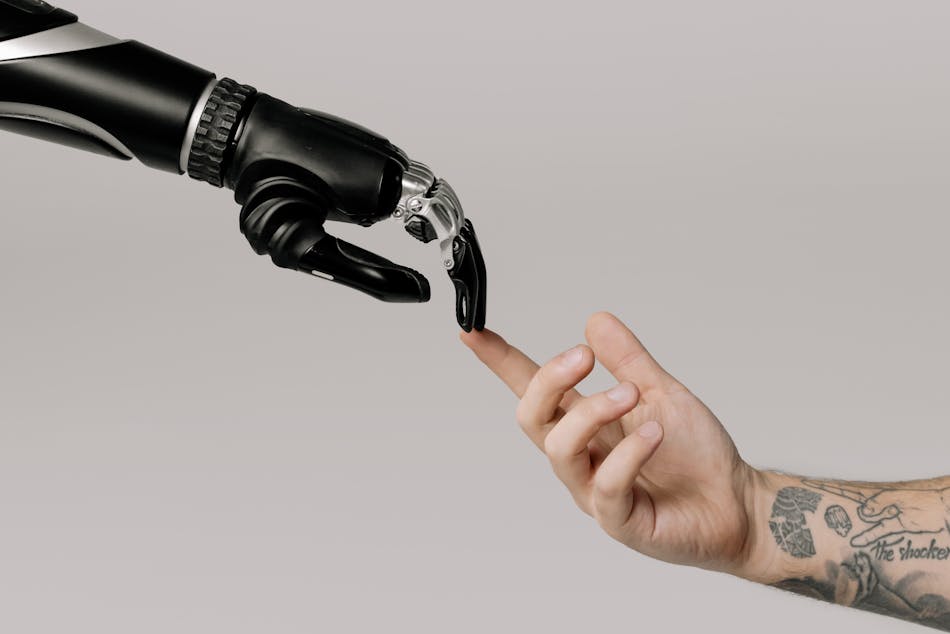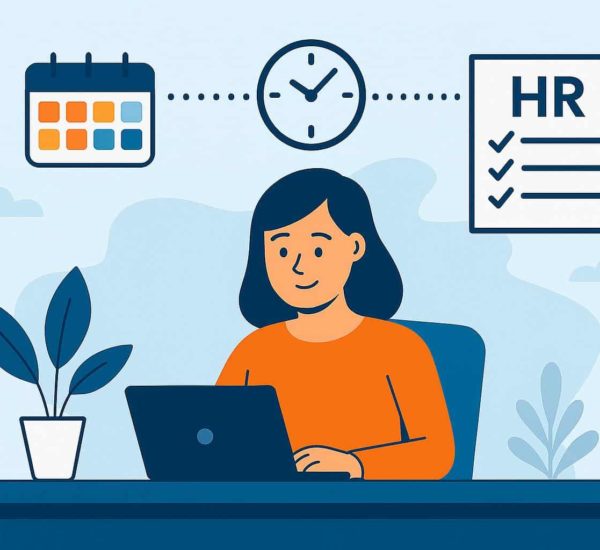As businesses increasingly rely on automation to streamline HR processes, questions around human resource management ethical issues have become more pressing than ever. From AI-driven recruitment tools to automated performance evaluations, technology is transforming the way HR functions—but at what cost? While automation enhances efficiency, it also raises concerns about ethical issues in human resource management, such as bias in hiring, data privacy, and the fairness of AI-driven decisions. HR leaders must navigate these human resources ethical issues carefully, ensuring that technology serves employees rather than undermines them. This article explores the ethical issues in human resource management, highlighting the challenges and responsibilities that come with integrating automation into workforce management.
What are AI Ethics?
AI ethics refers to the principles and guidelines that shape the responsible creation, deployment, and regulation of artificial intelligence (AI) technologies. It ensures AI systems align with legal standards, human values, and social responsibility. Key concerns include data privacy, bias mitigation, transparency, and accountability in AI-driven decisions. Ethical AI practices aim to prevent discrimination, protect individual rights, and maintain human oversight to avoid unintended consequences. By addressing these challenges, organizations can build trust in AI while promoting fairness and ethical decision-making.
Here are some key aspects of AI ethics:
- Fairness and Bias Mitigation – Ensuring AI systems do not reinforce or amplify biases in hiring, decision-making, or other HR processes.
- Transparency and Explainability – Making AI decisions understandable and justifiable to users, employees, and stakeholders.
- Accountability and Responsibility – Establishing clear guidelines on who is responsible when AI-driven decisions have negative consequences.
- Privacy and Data Protection – Safeguarding employee and candidate data while complying with regulations like GDPR and CCPA.
- Human Oversight and Control – Maintaining human involvement in critical decisions to prevent over-reliance on AI automation.
- Workplace Ethics and Job Displacement – Addressing concerns about AI replacing human jobs and ensuring a fair transition for affected employees.
- Security and Risk Management – Protecting AI systems from cyber threats, misuse, and unintended consequences.
 How AI Is Transforming Human Resources
How AI Is Transforming Human Resources
The fusion of artificial intelligence (AI) and human resources is revolutionizing the way HR professionals operate. While AI cannot replace the human connection at the heart of HR, its ability to enhance efficiency and decision-making is undeniable. From accelerating recruitment and improving candidate selection to automating repetitive tasks and leveraging data for predictive insights, AI is reshaping HR strategies.
Recent research featured in Eightfold AI’s report, The Future of Work: Intelligent by Design, highlights how AI is becoming a staple in HR operations. A survey of HR leaders found that AI is widely used for managing employee records, payroll, recruitment, performance tracking, and onboarding. This growing reliance on AI is streamlining processes and enabling HR teams to focus more on strategic initiatives.
However, as AI takes on a greater role in HR, ethical concerns must be addressed. Ensuring responsible implementation is key to balancing technological advancements with fairness, transparency, and accountability in the workplace.
Ethical Considerations of AI in HR
The adoption of artificial intelligence (AI) in human resources brings both advantages and ethical challenges. As HR professionals leverage AI to improve hiring, performance evaluations, and employee engagement, ensuring responsible implementation is critical. Ethical concerns such as bias, data privacy, and transparency must be addressed to maintain trust and fairness in HR processes. This section explores key ethical implications of AI in HR and how organizations can navigate them responsibly.
1. Assessing Bias and Ensuring Fairness
AI systems learn from historical data, which can sometimes reflect biases present in past hiring and HR decisions. If not carefully monitored, AI algorithms can perpetuate or even amplify discrimination based on gender, race, age, or other protected characteristics. To mitigate bias, organizations should:
- Conduct regular audits of AI-driven decisions.
- Use diverse and representative data sets.
- Implement bias-detection tools to ensure fairness in recruitment and promotions.
2. Protecting Employee Data and Privacy
AI in HR often requires access to vast amounts of employee data, raising concerns about privacy and security. Misuse or unauthorized access to sensitive information could lead to breaches and ethical violations. To safeguard employee data:
- Establish strict data governance policies.
- Implement encryption and cybersecurity measures.
- Ensure compliance with global data protection regulations like GDPR or CCPA.
3. Ensuring Transparency in AI Decision-Making
One of the biggest challenges in AI adoption is the “black box” nature of many AI algorithms, where decisions are made without clear explanations. Lack of transparency can lead to distrust among employees and stakeholders. Organizations should:
- Provide clear explanations for AI-driven HR decisions.
- Allow employees to contest AI-generated outcomes.
- Develop AI models that prioritize interpretability and explainability.
4. Maintaining Accountability for AI-Driven Decisions
Even though AI can automate many HR tasks, accountability ultimately rests with human decision-makers. If AI makes an unfair hiring or termination decision, HR leaders must take responsibility. To ensure accountability:
- Define clear policies on AI’s role in decision-making.
- Require human oversight for critical HR decisions.
- Establish ethical AI committees to review and assess AI applications.
5. Preventing Over-Reliance on AI Over Human Judgment
While AI can enhance efficiency, HR decisions should not be entirely dependent on automated systems. Over-reliance on AI may lead to impersonal interactions, decreased employee trust, and ethical dilemmas. Organizations should:
- Balance AI-driven insights with human judgment.
- Train HR teams to interpret AI recommendations critically.
- Encourage a human-centric approach to employee engagement.
6. Addressing AI’s Impact on Workforce and Job Displacement
As AI automates repetitive HR tasks, concerns about job security and workforce displacement arise. Employees may fear being replaced by technology, leading to resistance and ethical challenges. To navigate this:
- Invest in employee reskilling and upskilling initiatives.
- Communicate AI’s role as a tool for support rather than replacement.
- Foster a culture that embraces AI as an enabler of efficiency, not a threat.
Real-World Examples and Case Studies
Several organizations have successfully integrated AI into their HR processes while maintaining ethical standards:
- Unilever’s AI-Powered Hiring Process: Unilever recruits over 30,000 individuals annually, processing approximately 1.8 million applications. To enhance efficiency, they implemented an AI-driven recruitment strategy comprising four stages: an initial application, neuroscience-based games to assess cognitive and emotional traits, AI-analyzed video interviews, and a final assessment at their Discovery Center. This approach has streamlined their hiring process while addressing ethical considerations such as bias and transparency. For a visual overview of Unilever’s AI-driven hiring process, you might find this video insightful.
- IBM’s Predictive Analytics for Employee Retention: IBM developed an AI-based predictive attrition model capable of identifying employees at risk of leaving with up to 95% accuracy. This tool enables HR departments to design personalized retention plans, ultimately reducing turnover rates and boosting engagement. IBM emphasizes transparency and employee awareness in the use of this technology.
These examples demonstrate how AI can be ethically integrated into HR practices to enhance efficiency and employee satisfaction.
Legal and Compliance Considerations
As AI becomes increasingly embedded in HR processes, organizations must ensure compliance with evolving legal and regulatory frameworks. Several key legal considerations include:
- Data Privacy and Protection Laws: Regulations such as the General Data Protection Regulation (GDPR) in the EU and the California Consumer Privacy Act (CCPA) mandate stringent guidelines for data collection, processing, and storage. AI-driven HR tools that handle employee data must adhere to these laws to prevent breaches and unauthorized use. (gdpr.eu, oag.ca.gov/privacy/ccpa)
- Bias and Discrimination Laws: AI algorithms must comply with anti-discrimination laws such as the Equal Employment Opportunity Commission (EEOC) guidelines in the U.S. and the Equality Act 2010 in the U.K. If an AI hiring tool disproportionately favors or rejects certain groups, the organization could face legal repercussions. (eeoc.gov, legislation.gov.uk)
- Transparency and Explainability: Some jurisdictions, like the EU’s AI Act, emphasize the importance of AI transparency, requiring organizations to disclose when AI is used in hiring and employment decisions. Employees and candidates should have access to explanations of how AI-driven decisions are made. (digital-strategy.ec.europa.eu)
- Employee Rights and Consent: AI implementations should align with labor laws that safeguard employee rights. Employers should obtain clear consent from employees when using AI-powered surveillance or monitoring tools to track productivity. (ilo.org)
By staying compliant with these legal frameworks, HR leaders can mitigate risks while leveraging AI ethically and responsibly.

Bias and Fairness in AI-Driven HR Decisions
AI has the potential to enhance efficiency in HR, but it also raises concerns about bias and fairness in decision-making. While AI systems are designed to be objective, they can inadvertently perpetuate or amplify biases present in training data. Organizations must take proactive steps to mitigate these risks:
- Auditing AI Algorithms for Bias: AI systems should undergo regular audits to identify and correct biased patterns. This involves analyzing recruitment, promotion, and performance review data to ensure fair treatment across diverse employee groups. Learn more about AI bias in hiring.
- Ensuring Diversity in Training Data: AI models must be trained on diverse datasets to avoid favoring specific demographics. If an AI system is trained predominantly on data from one group, it may unfairly disadvantage others. Discover best practices for diverse AI training data.
- Human Oversight in AI Decisions: HR professionals should validate AI-driven recommendations rather than relying solely on automated outputs. AI should support, not replace, human judgment. Explore how human oversight enhances AI decision-making.
- Transparency in AI Processes: Employees and candidates should understand how AI impacts their employment opportunities. Providing clear explanations about AI-driven hiring decisions fosters trust and accountability. Read about the significance of transparency in AI.
- Regulatory Compliance on Fair AI Use: Employers must adhere to regulations such as the EEOC AI hiring guidance in the U.S. and AI fairness standards in the UK to ensure ethical AI implementation in HR.
By prioritizing fairness and accountability, organizations can build trustworthy AI-driven HR systems that foster inclusivity and equal opportunities.
AI-Driven vs. Human-Led HR Processes: A Comparative Analysis
| Aspect | AI-Driven HR | Human-Led HR |
| Recruitment | Automated resume screening and ranking | Manual resume review and candidate selection |
| Interviewing | AI-powered chatbots conduct initial screenings | HR professionals conduct all interviews |
| Performance Evaluation | Data-driven analysis of KPIs and trends | Subjective assessments based on observations |
| Employee Engagement | AI-driven sentiment analysis from surveys | HR gathers feedback through conversations |
| Decision Speed | Instant processing and recommendations | Time-consuming and iterative |
| Bias & Fairness | Risk of algorithmic bias, but can be mitigated | Potential for unconscious human bias |
| Personalization | Uses predictive analytics for tailored strategies | Relies on intuition and past experiences |
| Final Decision-Making | Provides insights, but requires human oversight | HR professionals make final decisions |
Summary: The Ethics of Automation in HR
The rise of artificial intelligence (AI) in human resource management is reshaping traditional HR functions, streamlining everything from recruitment to performance evaluation. While AI-driven tools can enhance efficiency, they also introduce human resource management ethical issues related to bias in AI decision-making, data privacy, and workplace transparency.
Organizations must address these challenges by ensuring ethical AI adoption in HR, maintaining compliance with employment laws, and upholding fair hiring practices. Striking a balance between automation and human oversight is key to leveraging AI while fostering an ethical, unbiased, and inclusive work environment.

 How AI Is Transforming Human Resources
How AI Is Transforming Human Resources

